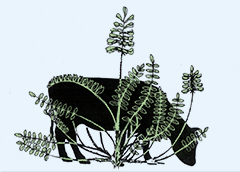Abstract
Halogeton (Halogeton glomeratus) is a fast-growing annual plant while greasewood (Sarcobatus vermiculatus) is a perennial shrub of the Western States. Oxalates are the toxic principle in halogeton and greasewood. Most losses occur when hungry animals are allowed to graze in heavy stands of halogeton and greasewood. Halogeton and greasewood are always dangerous and become more toxic as the growing season progresses. Here we report on two clinical cases of halogeton and greasewood poisoning in cattle and sheep. Histologically, oxalate crystals were observed in the kidneys of the cow and sheep consistent with oxalate poisoning. Oxalate was detected in the rumen contents using gas chromatography-flame ionization detection (GC-FID). Lastly, halogeton and greasewood were detected in the rumen contents of the poisoned cow and sheep using DNA metabarcoding. In summary, multiple lines of corroborative evidence were used to make the diagnoses of oxalate poisoning in these cases.
Recommended Citation
Kelly, E. Jane; Lee, Stephen T.; Brown, Ammon; and Cook, Daniel
(2025)
"Halogeton and Greasewood Poisoning in Cattle and Sheep in Utah,"
Poisonous Plant Research (PPR): Vol. 8, p. 3-6.
DOI: https://doi.org/10.26077/bd54-998b
Available at:
https://digitalcommons.usu.edu/poisonousplantresearch/vol8/iss1/1
Included in
Agriculture Commons, Animal Sciences Commons, Biology Commons

